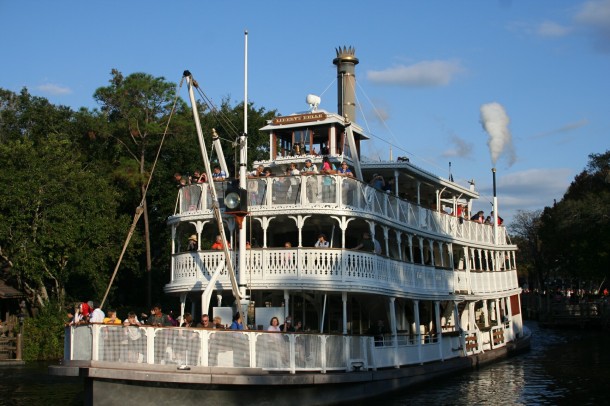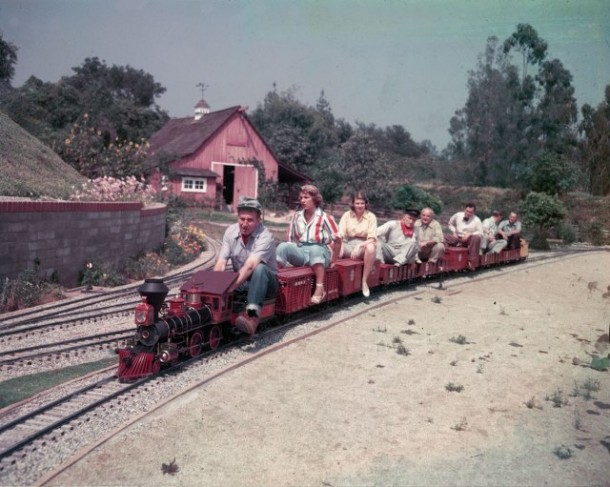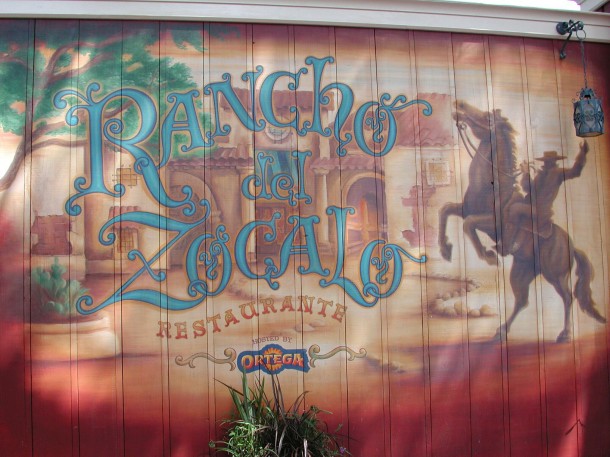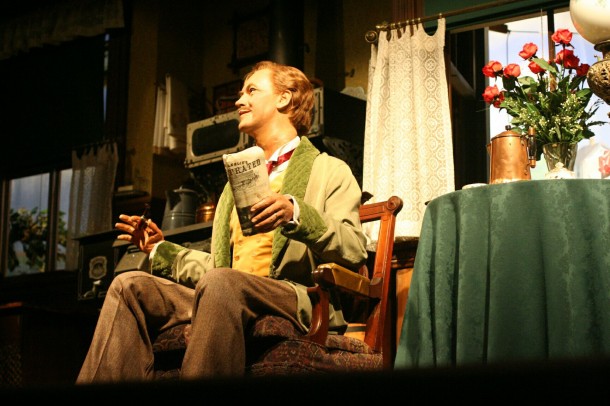Walt Disney enjoys an almost unmatched reputation as a Great Innovator in the same vein as Thomas Edison and Henry Ford. This extends to many epochs of his career, including the very concept of theme parks as we know them today. The problem is, he has been lionized so much, and put on so high a pedestal, that I think we’ve lost sight of the true accomplishment. Walt was less of an “innovator” than he was an “adapter”. This is true not only for the theme park concept, but also other heralded innovations he is given credit for.

Let’s start with theme parks. Corporate Disney histories often claim that Walt Disney invented the theme park idea. But is it really true?
Walt admitted that he was partly inspired by Tivoli Gardens in Denmark. What’s in Tivoli Gardens? Well, it’s not a typical, traditional amusement park, with rides strewn everywhere and no sense of place. Instead, it’s got park-like features (think city park), but also discrete LANDS. That seems to make it something of a theme park (not an amusement park), doesn’t it?
Students of Disney company history can name another inspiration: Greenfield Village. This outdoor museum is more than just a collection of authentic and reproduction houses from American history: it’s also got some key city-park features that will look awfully familiar to Disney fans. Namely, it had a train encircling the property, an island with a river around it, and a paddleboat cirumnavigating the river. When did Walt see this? In 1948, while on a train trip with animator Ward Kimball. Disneyland looks a little less original seen in this light.

The timeline is important. Greenfield Village came first, with its Disneyland-like layout, and Walt’s new (renewed from childhood) interest in trains of all kinds. Kimball had a backyard train… and Walt just bought a house in Holmby Hills with a big backyard (in 1949). After some negotiation with his wife Lillian, he got permission to build his own backyard railroad, but his wouldn’t be full-sized like Kimball’s; Walt’s would be miniature. Thus was born the Carolwood-Pacific Railroad (named after the street he lived on). It opened in 1950.
The CPRR was popular, and operating it every weekend from his own house must surely have worn on Walt (and possibly Lillian). We should keep that in mind when considering Walt’s next proposed move: a miniature railroad (just like his one at home) to be built near the Studio. Originally conceived as a place for the families of his employees, Walt may have had a desire to not have his own domicile so overrun every weekend.

Disneyland as a concept grew from that Mickey Mouse Park (also known for a time as Disneylandia) into something much larger. It’s important to zero in on that: Disneyland was an outgrowth of an idea, not something Walt started with originally. It didn’t spring forth from his head fully grown, like Athena bursting forth from Zeus.
Walt famously worked out many details of the park on a single weekend with artist Herb Ryman. How many of the ideas were Herb’s, rather than Walt’s, will never be known. There exists here at least the possibility that Herb created some of the ideas for Disneyland.

Looking at the Ryman map, we see the germ provided by Greenfield Village: a circling train, an island, a river, a paddlewheeler, and historical buildings. This shows that at least SOME of Walt’s ideas were derivative. Tivoli may have entered his mind here as a model – he and other artists did some benchmarking of amusement parks in these years – so we could have additional inspiration there. [EDIT: an earlier version of this paragraph drew a connection to the Knott’s Berry Farm Calico Mine Train, but that attraction was actually created after Walt’s Rainbow Caverns].
So was the rest of Disneyland pure invention, then? Not so fast. We’ve already talked about the origins of Main Street, the island/boat part of Frontierland, the mine train, and the circling train. Other sections of the park were not invented out of whole cloth for the park, but ideas *repurposed* from other things in the Disney library. Fantasyland was the home to the Disney animated movies – no surprise there. The science shows and cartoons Disney was making popular in the 1950s gave Tomorrowland its “visit the moon” surface theme. The profitable True-Life Adventures movies gave spawn to True-Life Adventureland (until its name was shortened). The rest of Frontierland came from other properties Disney was working with (Zorro and Davy Crockett), plus Walt’s childhood fascination with Mark Twain books.
Even some of the ideas that came after the park opening had roots elsewhere. Those much-appreciated Audio-Animatronics? Not invented from thin air – Walt saw and purchased a mechanical bird, ordering his team to dissemble it to figure out how it worked, because he wanted something similar.
In none of the above cases was Walt inventing things that had never been seen before. The theme park was a three-dimensional *application* of other existing ideas. Once again, this shows Walt adapting ideas, re-purposing them, rather than inventing brand new ones.

In fact, it COULD be argued that the attractions in Disneyland that are the most “original” are the ones that were guided by Walt’s inner team shortly after his death: Pirates of the Caribbean and Haunted Mansion (Walt had fingers in both of those, but nowhere close to the level of involvement he’d had earlier at Disneyland. And even then, it’s not as if the Haunted Mansion was the first-ever haunted house attraction.
You could take this article’s central claim and expand it to SOME other (but not all) parts of Walt’s illustrious career. Below are some moments often heralded as huge Disney innovations, with some context added:
- Steamboat Willie is celebrated as the first cartoon with sound, and it was. But it wasn’t the first film with sound – that would be the Jazz Singer (1927). Walt’s accomplishment would more truly be an invention if Mickey had been the first-ever sound in theaters. As it was, the sound cartoon was an adaption of someone else’s technology.
- The first cartoon with sound and color? Fiddlesticks (1930)… created by Ub Iwerks, not Disney. There were actually many films (long and short) in color before Disney’s movies. It is true, however, that Flowers and Trees was the first Technicolor film – once again a refinement of a concept rather than having an idea no one had had before.
- The multiplane camera that seems to be associated with Disney? It came after a long history of similar inventions.
- Snow White and the Seven Dwarfs really WAS Walt being inventive and thinking of something no one else could conceive of – in fact, he was ridiculed for the vision before it came out.
- Walt *did* have one other idea no one else did: Fantasia (ethereal cartoons with no words, only classical music, showing what someone might THINK while listening to music). It fared quite poorly in the box office, even upon re-release. That doesn’t speak well of Walt’s foray into truly new ideas.
- CalARTS – this Disney-funded school for artists was a fairly unique creation.
- Do the Alice Comedies qualify as new to the world?
- The “Griffith Park Credo” where Walt famously claimed Disneyland began on a bench watching the carousel at Griffith Park, wishing a place could be built where families have fun together, would seem to imply that Disneyland was Walt’s idea born from this. But the train-backyard-Mickey Mouse Park-Anaheim evolution speaks otherwise. Plus, Walt did eventually include a carousel in his Disneyland, which perhaps implies he didn’t adhere completely to this credo himself.
- EPCOT would have been new and visionary (or perhaps a refinement too; it’s not as if cities didn’t exist before Walt). But it never got built, so we will never know for sure.

The question, of course, is whether “innovation” can and should always just mean adapting. Sometimes people understand the word to refer to creating a “new” concept, and this isn’t what Disney does.
Let’s imagine a startup car company (ACME Motors) now creating an all-electric car that works better, faster, longer, more powerfully, and cheaper than others on the road. Tesla and others were first with the concept; do we say ACME Motors innovated? Sometimes we do, especially when we mean that innovation is a refinement of processes and parts, rather than a new concept entirely.
In that overlap is where we CAN say that Walt Disney was an innovator. But mostly, he was an adapter. There’s nothing wrong with that kind of tinkering and refining. We need it, and we benefit from it. But Walt didn’t often have a vision for something that never existed before, the way Thomas Edison did. Visionary-level innovators don’t refine ideas so much as have the vision to see something no one has thought of before. This kind of accolade is heaped upon Walt sometimes, but it’s far from clear that he deserved it.
Walt was a successful adapter and he had the genius for knowing what the public would like. His brother Roy may claim Walt was a horrible businessman, but that only extends to the fiscal decisions, not the ones about putting his adaptions to work in a way the public can consume and purchase. For that, Walt was genius. And that’s enough–we don’t need to also label him an innovator (at least not in the “invention” sense) when his genius actually lay elsewhere.

Ultimate Orlando Clicks – Seven Dwarfs Mine Train Vehicle
We catch the mine train testing in action and examine some photos up close, plus catch up on other maintenance happening around the Magic Kingdom this week (Casey’s Corner refinements, moat/hub construction, Splash Mountain, etc).
Direct link: http://youtu.be/MbLA3aQDrUE
Re-Launching Ultimate Orlando
I’ve maintained a “side blog” since 2006 and now unify all my social networking around this one site and brand. That means I only use the “Ultimate Orlando” venues/accounts going forward on Facebook and Twitter. Also of note: I had to change the YouTube channel, so if you subscribe to the current one be sure you switch your subscription to the new one. If you follow me on any of these services, please update your bookmarks:
- Website – http://ultimateorlando.com
- Twitter – https://twitter.com/UltOrlando
- Facebook – https://www.facebook.com/UltimateOrlando
- Instagram – http://instagram.com/ultimateorlando
- Pinterest – http://www.pinterest.com/ultimateorlando
- YouTube – http://bit.ly/1bbOyrx (this is where the “Clicks” podcast show now lives – it’s a new channel)
- Google+ – http://bit.ly/1dRC1Gt


You must be logged in to post a comment.